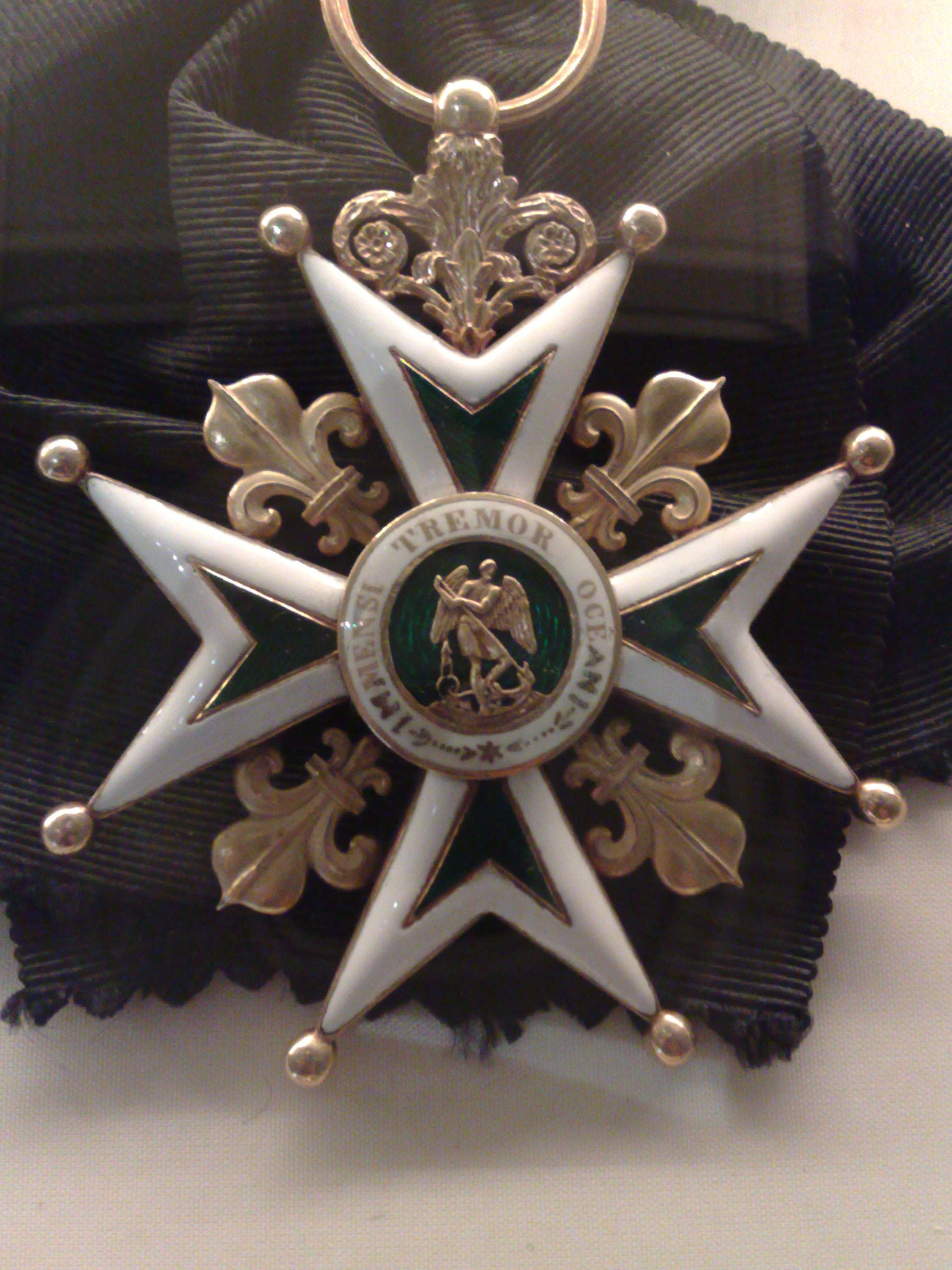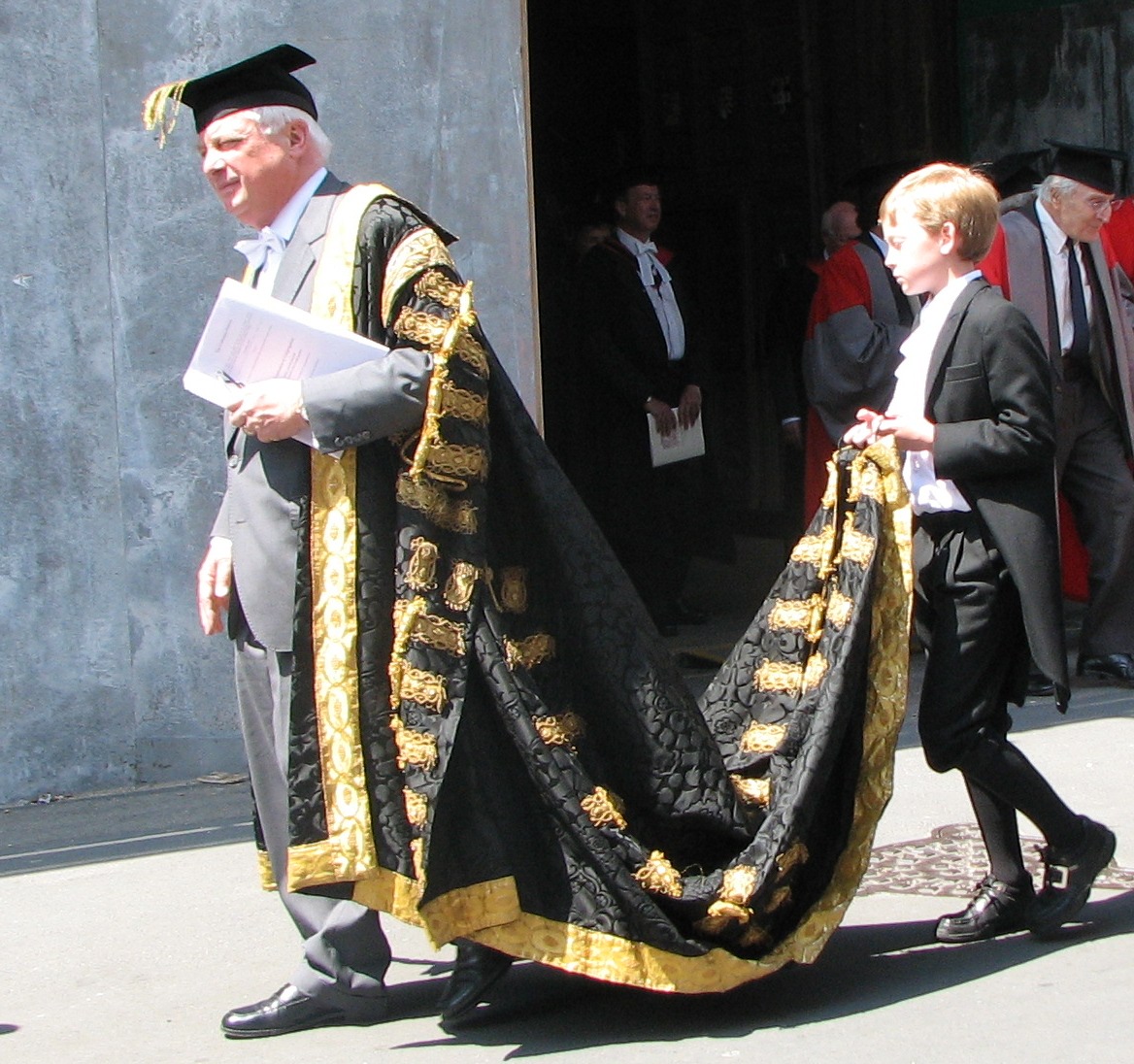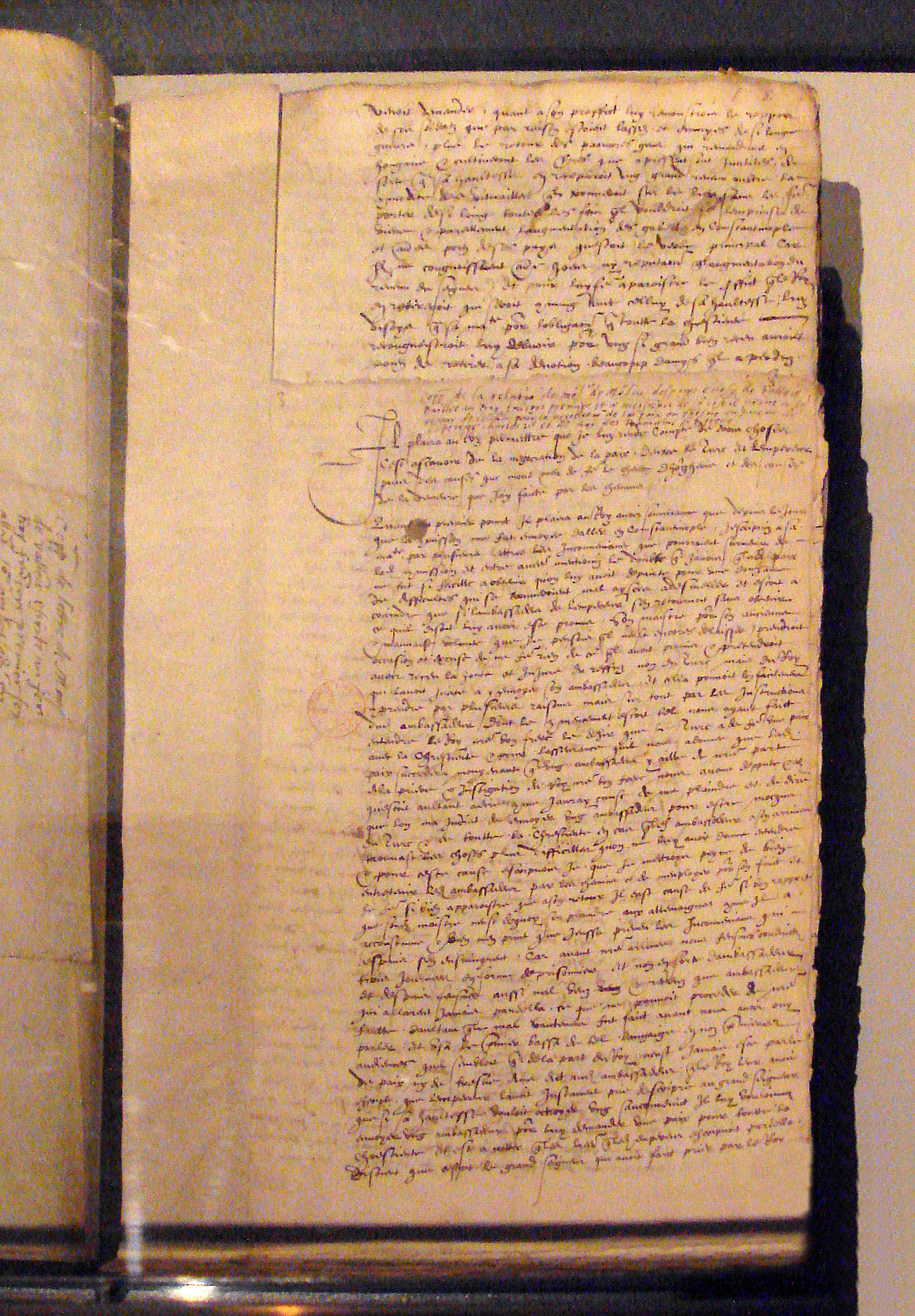|
Blaise De Montluc
Blaise de Monluc, also known as Blaise de Lasseran-Massencôme, seigneur de Monluc, (24 July 1577) was a professional soldier whose career began in 1521 and reached the rank of marshal of France in 1574. Written between 1570 and 1576, an account of his life titled ''Commentaires de Messire Blaise de Monluc'' was published in 1592, and remains an important historical source for 16th century warfare. Born into a family of impoverished Gascon nobility, he rose to prominence during the Italian Wars and was appointed Lieutenant-General of Guyenne in January 1562, shortly before the outbreak of the French Wars of Religion. Fighting for the French crown, he soon gained a reputation as a brutal but effective commander, winning the critical Battle of Vergt in 1562. He was badly injured in July 1570 and dismissed for alleged corruption soon after, dying at home in Estillac on 24 July 1577. Personal details Blaise de Monluc was born between 1500 to 1502 in Saint-Puy, eldest son of Fran� ... [...More Info...] [...Related Items...] OR: [Wikipedia] [Google] [Baidu] |
Order Of Saint Michael
, status = Abolished by decree of Louis XVI on 20 June 1790Reestablished by Louis XVIII on 16 November 1816Abolished in 1830 after the July RevolutionRecognised as a dynastic order of chivalry by the ICOC , founder = Louis XI of France , higher = Order of the Holy Spirit , lower = Order of Saint Louis , image2 = , caption2 = Ribbon of the Order The Order of Saint Michael (french: Ordre de Saint-Michel) is a French dynastic order of chivalry, founded by King Louis XI of France on 1 August 1469, in competitive response to the Order of the Golden Fleece founded by Duke Philip the Good of Burgundy, Louis' chief competitor for the allegiance of the great houses of France, the dukes of Orléans, Berry, and Brittany. As a chivalric order, its goal was to confirm the loyalty of its knights to the king. Originally, there were a limited number of knights, at first thirty-one, then increased to thirty-six including the king. An office of Provost was established in 1476. The Order ... [...More Info...] [...Related Items...] OR: [Wikipedia] [Google] [Baidu] |
Marshal Of France
Marshal of France (french: Maréchal de France, plural ') is a French military distinction, rather than a military rank, that is awarded to generals for exceptional achievements. The title has been awarded since 1185, though briefly abolished (1793–1804) and for a period dormant (1870–1916). It was one of the Great Officers of the Crown of France during the and Bourbon Restoration, and one of the Grand Dignitaries of the Empire during the First French Empire (when the title was Marshal of the Empire, not Marshal of France). A Marshal of France displays seven stars on each shoulder strap. A marshal also receives a baton: a blue cylinder with stars, formerly fleurs-de-lis during the monarchy and eagles during the First French Empire. The baton bears the Latin inscription of ', which means "terror in war, ornament in peace". Between the end of the 16th century and the middle of the 19th century, six Marshals of France were given the even more exalted rank of Marshal General ... [...More Info...] [...Related Items...] OR: [Wikipedia] [Google] [Baidu] |
Page (servant)
A page or page boy is traditionally a young male attendant or servant, but may also have been a messenger in the service of a nobleman. During wedding A wedding is a ceremony where two people are united in marriage. Wedding traditions and customs vary greatly between cultures, ethnic groups, religions, countries, and social classes. Most wedding ceremonies involve an exchange of marriage vo ... ceremonies, a Page boy (wedding_attendant), page boy is often used as a symbolic attendant to carry the rings. Etymology The origin of the term is uncertain, but it may come either from the Latin ''pagus'' (servant), possibly linked to peasant, or an earlier Greek word (''pais'' = child). The medieval page In Middle Ages, medieval times, a page was an attendant to a nobleman, a knight, a governor or a castellan. Until the age of about seven, sons of noble families would receive training in manners and basic literacy from their mothers or other female relatives. Upon reach ... [...More Info...] [...Related Items...] OR: [Wikipedia] [Google] [Baidu] |
Antoine, Duke Of Lorraine
Antoine (4 June 148914 June 1544), known as the Good, was Duke of Lorraine from 1508 until his death in 1544. Raised at the French court, Antoine would campaign in Italy twice: once under Louis XII and the other with Francis I. During the German Peasants' War, he would defeat two armies while retaking Saverne and Sélestat. Antoine succeeded in freeing Lorraine from the Holy Roman Empire with the Treaty of Nuremberg of 1542. In 1544, while Antoine suffered from an illness, the Duchy of Lorraine was invaded by Emperor Charles V's army on their way to attack France. Fleeing the Imperial armies, Antoine was taken to Bar-le-Duc where he died. Biography Antoine was born, 4 June 1489, at Bar-le-Duc, the son of René II, Duke of Lorraine and Philippa of Guelders. He spent seven years at the court of King Louis XII together with his brother Claude, and became friends with the Duke of Angoulême, the future King Francis I. After the death of his father, Antoine succeeded him as duke ... [...More Info...] [...Related Items...] OR: [Wikipedia] [Google] [Baidu] |
Roman Catholic Diocese Of Condom
The Roman Catholic Diocese of Condom was a French bishopric based in Condom from 1317 to 1801. It comprised four archdeaconries : Condom itself, Bruilhois, Villefranche and Nérac. In 1763 these totaled circa 140 parishes. Abbey of Condom The diocese grew out of a much older abbey at Condom whose origin remains obscure. After the original monastery's destruction during the ninth century Norman raids or, more likely, the Saracene mid tenth century raids, on its ruins a Benedictine cenobium with a church devoted to Saint Peter was built in 1041, which over time enjoyed many donations and received privileges, confirmed by Popes. One of its monks wrote the Historia abbatiae Condomensis on its history, but it's held unreliable. History * The Diocese of Condom was established as such on 17 July 1317 by transforming the abbey into a bishopric: its elevation was confirmed on 13 August 1317 by Pope John XXII in the papal bull ''Salvator noster'', assigning to it a territory from its m ... [...More Info...] [...Related Items...] OR: [Wikipedia] [Google] [Baidu] |
Nogaro
Nogaro (; Gascon: ''Nogaròu'') is a commune in the Gers department, Southwestern France. It is the site of a distillery of Armagnac brandy. Geography The commune is bordered by six other communes: Caupenne-d'Armagnac to the northwest, Sainte-Christie-d'Armagnac to the northeast, Loubédat to the east, Sion, Gers, Sion to the southeast, Urgosse to the south, and finally by Arblade-le-Haut to the west. Population Sports Nogaro is the site of Circuit Paul Armagnac, a motorsport race track. Notable people The historian and palaeographer Charles Samaran (1879–1982) died in Nogaro. The chef and television host Michel Sarran was born in Nogaro. The tennis player Tessah Andrianjafitrimo has lived in Nogaro since 2010. See also *Communes of the Gers department The following is a list of the 461 communes of the Gers department of France. The communes cooperate in the following intercommunalities (as of 2020): [...More Info...] [...Related Items...] OR: [Wikipedia] [Google] [Baidu] |
Madeira
) , anthem = ( en, "Anthem of the Autonomous Region of Madeira") , song_type = Regional anthem , image_map=EU-Portugal_with_Madeira_circled.svg , map_alt=Location of Madeira , map_caption=Location of Madeira , subdivision_type=Sovereign state , subdivision_name=Portugal , established_title=Discovery , established_date=1418-1419 , established_title2=Settlement , established_date2=c. 1425 , established_title3=Autonomous status , established_date3=30 April 1976 , named_for = en, wood ( pt, madeira) , official_languages=Portuguese , demonym= en, Madeiran ( pt, Madeirense) , capital = Funchal , government_type=Autonomous Region , leader_title1=Representative of the Republic , leader_name1=Irineu Barreto , leader_title2=President of the Regional Government of Madeira , leader_name2=Miguel Albuquerque , leader_title3=President of the Legislative Assembly , leader_name3=José Manuel Rodrigues , legislature= Legislative Assembly , national_representation=National ... [...More Info...] [...Related Items...] OR: [Wikipedia] [Google] [Baidu] |
Ostia (Rome)
Ostia (, ; officially Lido di Ostia) is a large neighbourhood in the X Municipio of the ''comune'' of Rome, Italy, near the ancient port of Rome, which is now a major archaeological site known as Ostia Antica. Ostia is also the only or district of Rome on the Tyrrhenian Sea, and many Romans spend the summer holidays there. History Ostia Antica had been the port city of ancient Rome, and is often referenced in writings from the times of the Roman Republic and the Roman Empire. For Christian posterity, Ostia Antica was especially important as the site of the death of Saint Monica (mother of Saint Augustine) in 387 in a house property of the Diocesi of Rome, on their way back to Africa after Augustine's conversion to Christianity. An important stand in Italian nationalism of the 19th century was a veneration for the glories of the Roman past, manifested in a wish to revive or recreate various places and institutions connected with Ancient Rome. In 1871, the city of Rome became ... [...More Info...] [...Related Items...] OR: [Wikipedia] [Google] [Baidu] |
Dordogne
Dordogne ( , or ; ; oc, Dordonha ) is a large rural department in Southwestern France, with its prefecture in Périgueux. Located in the Nouvelle-Aquitaine region roughly half-way between the Loire Valley and the Pyrenees, it is named after the river Dordogne, which runs through it. It corresponds roughly to the ancient county of Périgord. In January 2019, Dordogne had a population of 413,223. History The county of Périgord dates back to when the area was inhabited by the Gauls. It was originally home to four tribes. The name for "four tribes" in the Gaulish language was "Petrocore". The area eventually became known as the county of Le Périgord and its inhabitants became known as the Périgordins (or Périgourdins). There are four Périgords in thDordogne * The "Périgord Vert" (Green Périgord), with its main town of Nontron, consists of verdant valleys in a region crossed by many rivers and streams;. * The "Périgord Blanc" (White Périgord), situated around the dep ... [...More Info...] [...Related Items...] OR: [Wikipedia] [Google] [Baidu] |
Marshal Of France
Marshal of France (french: Maréchal de France, plural ') is a French military distinction, rather than a military rank, that is awarded to generals for exceptional achievements. The title has been awarded since 1185, though briefly abolished (1793–1804) and for a period dormant (1870–1916). It was one of the Great Officers of the Crown of France during the and Bourbon Restoration, and one of the Grand Dignitaries of the Empire during the First French Empire (when the title was Marshal of the Empire, not Marshal of France). A Marshal of France displays seven stars on each shoulder strap. A marshal also receives a baton: a blue cylinder with stars, formerly fleurs-de-lis during the monarchy and eagles during the First French Empire. The baton bears the Latin inscription of ', which means "terror in war, ornament in peace". Between the end of the 16th century and the middle of the 19th century, six Marshals of France were given the even more exalted rank of Marshal General ... [...More Info...] [...Related Items...] OR: [Wikipedia] [Google] [Baidu] |
Roman Catholic Diocese Of Valence
The Roman Catholic Diocese of Valence (–Die–Saint-Paul-Trois-Châteaux) (Latin: ''Dioecesis Valentinensis (–Diensis–Sancti Pauli Tricastinorum)''; French: ''Diocèse de Valence (–Die–Saint-Paul-Trois-Châteaux'') is a diocese of the Latin Church of the Roman Catholic Church in southern France. The contemporary diocese is co-extensive with the department of Drôme. The Cathedral of Valence was originally dedicated to Saints Cornelius and Cyprianus (Bishops of Rome and of Carthage, both mid-third century martyrs), but in 1095, during his visit to France to rouse up the aristocracy for a Crusade to liberate the Holy Land, Pope Urban II rededicated the cathedral to Saint Apollinaris, one of Valence's sixth century bishops. The Cathedral had fourteen Canons, including a Dean, a Provost, the Archdeacon, a Theologian, and the Abbot of S. Felix. In the Great Western Schism (1378–1417), the Bishops of Valence-et-Die were all appointed by and were loyal to the Popes of the A ... [...More Info...] [...Related Items...] OR: [Wikipedia] [Google] [Baidu] |
Jean De Monluc
Jean de Monluc, 1508 to 12 April 1579, was a French nobleman, clergyman, diplomat and courtier. He was the second son of François de Lasseran de Massencome, a member of the Monluc family; and Françoise d' Estillac. His birthplace is unknown, but it has been observed that his parents spent a great deal of time at their favorite residence at Saint-Gemme in the commune of Saint-Puy near Condom. His elder brother Blaise de Montluc became a soldier and eventually Marshal of France (1574). Early career Jean began his religious career as a young Dominican novice, in either their Convent in Condom or the one in Agen. From the beginning he showed outstanding talent as a public speaker. He was introduced to Queen Marguerite de Navarre, the sister of King Francis I of France, who often stayed in her chateau at Nérac, just north of Condom, and quickly became part of her entourage, abandoning his life as a Dominican friar. French diplomat In 1524 Jean de Monluc served as an attach ... [...More Info...] [...Related Items...] OR: [Wikipedia] [Google] [Baidu] |


.jpg)


